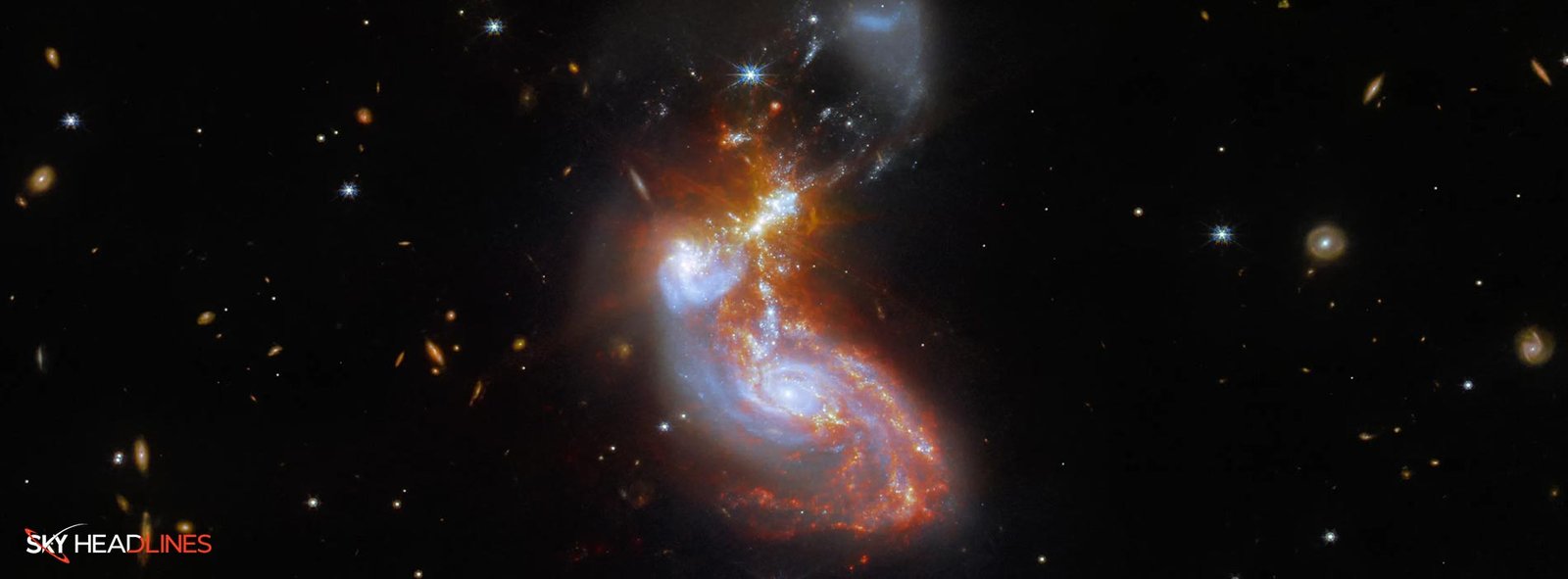CEERS survey presented a collection of pictures in a video form and this video shows pictures of thousands of galaxies taken by NASA’s James Webb Space Telescope. It’s part of a big project called the CEERS Survey. The video starts by showing galaxies near Earth and then moves on to far-away galaxies. These faraway galaxies are not as developed and are from the early stages of the universe.
“These images are exciting because the sheer number of these really high redshift galaxy candidates is larger than we expected,”
“We knew we’d find some, but I don’t think anybody thought we’d find as many as we have. It either means the universe works a little bit differently than we thought or there are a lot of other contaminating sources and these candidates will turn out to be something else. The reality is probably a mix of both.”
The video by CEERS includes a part of a large area called the Extended Groth Strip, which is located between the Ursa Major and Bootes constellations. The Hubble Space Telescope first saw this area in 2004 and 2005. The whole area has about 100,000 galaxies, but the video only shows about 5,000. The first galaxies you see are the closest and most developed ones. As the video goes on, the galaxies get farther from Earth. This helps us see how the universe has changed and grown over time.
What were the purpose and objectives behind CEERS survey?
The purpose of CEERS survey is to evaluate various telescope choices, collect information to reach early, with significant consequences science conclusions, and communicate within the world of astronomy through schooling and an urgent data dissemination timeline.
Studying galaxies during the epoch of reionization, a crucial stage in the development of astronomy when intense photons from the first stars ionized the intergalactic medium, is the main scientific objective of CEERS.
By exploring the accumulation of galaxies’ stellar mass, the expansion of their supermassive black holes, and their morphological change, CEERS also studies the assembly of galaxies between the period of reionization and the present.
Maisie, a far-away galaxy revealed by CEERS
One very faraway galaxy in the video by CEERS is called Maisie’s Galaxy. It started forming about 13.4 billion years ago, which is not long after the big bang. This galaxy is one of the first bright, faraway galaxies that the Webb Telescope found. This telescope can see this galaxy because it can pick up infrared light. The light from early galaxies like Maisie’s has moved to infrared wavelengths because the universe is expanding.
Rebecca Larson, a researcher from the Rochester Institute of Technology, said that the Webb Telescope lets us study these early galaxies. Before, we couldn’t see or learn about galaxies like Maisie’s. Now, we can find them and learn what they are made of. We can also find out if they are different from the galaxies closer to us.
Steven Finkelstein, who leads the CEERS program, said that they have found more early galaxies than they expected. He works at the University of Texas at Austin. The Webb Telescope’s ability to find these galaxies helps scientists understand how to use the telescope’s tools for future studies.
How can you compare Webb and Hubble telescopes when considering far-away galaxies?
The video shows how well the Webb Telescope can see faraway galaxies. It also shows how much it improves on what the Hubble Telescope could do. Both telescopes have helped researchers find which galaxies are far away and which are closer but look dark because their light is blocked.
Next, scientists want to find out how stars were made in these early galaxies. Finkelstein said that galaxies usually grow slowly, but maybe these early galaxies made stars quickly, like fireworks. They also might have made more stars or bigger stars than we thought. Now that we have these pictures and data from CEERS, we can ask these questions. But we still need more information to get the answers.





